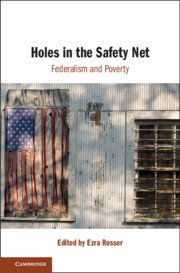In the News:
Devlin Barrett & Matt Zapotosky, FBI accuses wealthy parents, including celebrities, in college-entrance bribery scheme, Wash. Post, Mar. 12, 2019.
Libby Nelson, The real college admissions scandal is what’s legal, Vox, Mar. 12, 2019. “The scheme only worked because college admissions in America is broken.”
Joe Pinsker, Why Rich Parents Are So Set on Their Kids Going to Top Colleges, The Atlantic, Mar. 13, 2019. “There are plenty of examples of young people who go to all kinds of different schools who lead very successful and fulfilling lives, regardless of the name on their diploma,” . . . that may be true, but it’s harder to convey on a bumper sticker.
EJ Dickson, 9 of the Most WTF Details from the College Admissions Scandal Court Docs, Rolling Stone, Mar. 12, 2019.
Christal Hayes, College admissions scam rekindles scrutiny of Kushner’s Harvard acceptance, $2.5M pledge, USA Today, Mar. 12, 2019.
Literature:
William G. Bowen, Martin A. Kurzweil, and Eugene M. Tobin, Equity and Excellent in American Higher Education (2006).

Despite our rhetoric of inclusiveness, a significant number of youth from poor families do not share equal access to America’s elite colleges and universities. While America has achieved the highest level of educational attainment of any country, it runs the risk of losing this position unless it can markedly improve the precollegiate preparation of students from racial minorities and lower-income families. After identifying the “equity” problem at the national level and studying nineteen selective colleges and universities, the authors propose a set of potential actions to be taken at federal, state, local, and institutional levels. With recommendations ranging from reform of the admissions process, to restructuring of federal financial aid and state support of public universities, to addressing the various precollegiate obstacles that disadvantaged students face at home and in school, the authors urge all selective colleges and universities to continue race-sensitive admissions policies, while urging the most selective (and privileged) institutions to enroll more well-qualified students from families with low socioeconomic status.
Jerome Karabel, The Chosen: The Hidden History of Admission and Exclusion at Harvard, Yale, and Princeton (2005).
 Many of Karabel’s findings are astonishing: the admission of blacks into the Ivy League wasn’t an idealistic response to the civil rights movement but a fearful reaction to inner-city riots; Yale and Princeton decided to accept women only after realizing that they were losing men to colleges (such as Harvard and Stanford) that had begun accepting “the second sex”; Harvard had a systematic quota on “intellectuals” until quite recently; and discrimination against Asian Americans in the 1980s mirrored the treatment of Jews earlier in the century.
Many of Karabel’s findings are astonishing: the admission of blacks into the Ivy League wasn’t an idealistic response to the civil rights movement but a fearful reaction to inner-city riots; Yale and Princeton decided to accept women only after realizing that they were losing men to colleges (such as Harvard and Stanford) that had begun accepting “the second sex”; Harvard had a systematic quota on “intellectuals” until quite recently; and discrimination against Asian Americans in the 1980s mirrored the treatment of Jews earlier in the century.
Thomas J. Espenshade & Alexandria Walton Radford, No Longer Separate, Not Yet Equal: Race and Class in Elite College Admission and Campus Life (2009).

The authors explore the composition of applicant pools, factoring in background and “selective admission enhancement strategies”–including AP classes, test-prep courses, and extracurriculars–to assess how these strengthen applications. On campus, the authors examine roommate choices, friendship circles, and degrees of social interaction, and discover that while students from different racial and class circumstances are not separate in college, they do not mix as much as one might expect. The book encourages greater interaction among student groups and calls on educational institutions to improve access for students of lower socioeconomic status.
Op-Ed:
Gabrielle Bluestone, The college admissions scam is the perfect scandal in the golden age of grifters, Wash. Post, Mar. 13, 2019. “Part of what makes the Varsity Blues scandal so resonant is that it bluntly exposed workarounds that already exist to undermine higher education’s facade of meritocracy. It has long been legal — if distasteful — for wealthy parents to bribe colleges . . . .”
Rainesford Stauffer, I Learned in College That Admission Has Always Been for Sale, NY Times, Mar. 13, 2019. “The bribery scandal is no more abhorrent than the completely legal industry that helps many wealthy kids get into the schools of their dreams.”





